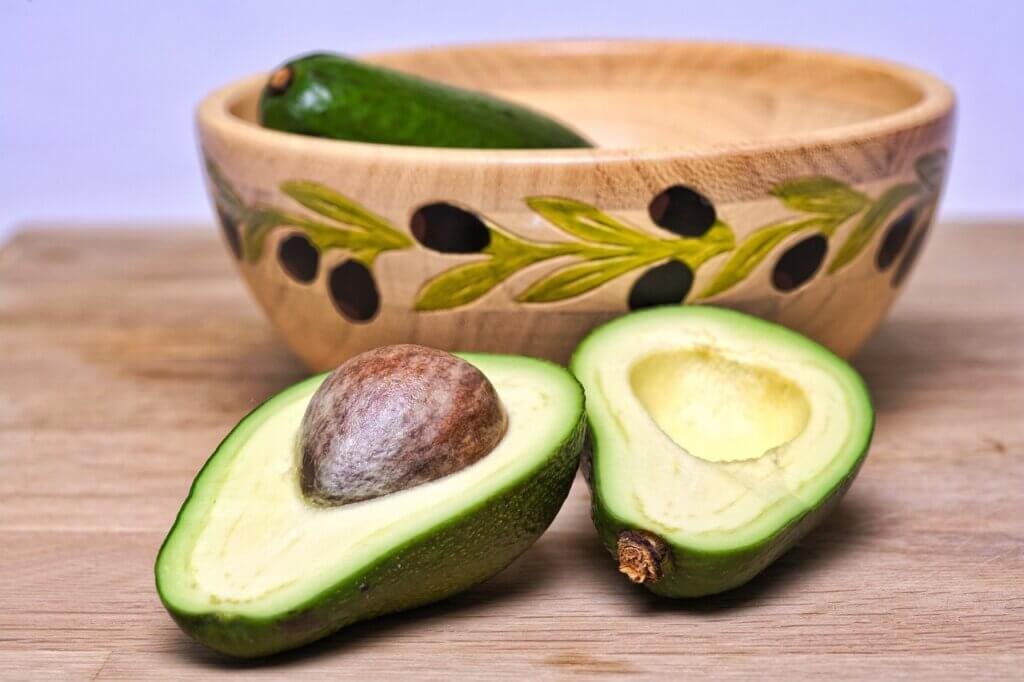Are you tired of struggling to rip open the tough skin of an avocado? Look no further, as we have compiled the ultimate list of kitchen hacks that will make your avocado experience hassle-free. Whether you’re a seasoned avocado lover or just starting to explore the delicious world of avocados, these tips and tricks will surely make your life easier. From using a spoon to scoop out the flesh effortlessly to the perfect timing for ripening, we’ve got you covered. Say goodbye to the struggle and hello to perfectly ripened avocados every time.

Choosing the Right Avocado
When it comes to choosing the perfect avocado, there are a few things to keep in mind. One of the first things to check is the color of the avocado. A ripe avocado should have a dark, almost black, color. If the avocado is still green, it is not yet ripe and will be firm and difficult to mash or slice. Additionally, avoid avocados that have any spots or bruises on the skin, as this can be a sign of over-ripeness or damage.
Another key factor in choosing the right avocado is the texture. Gently squeeze the avocado to see if it has a slight give when pressed. If it feels too firm, it is not ready to eat or use in your recipe just yet. On the other hand, if it feels overly soft and mushy, it may be overripe. The ideal texture is a gentle firmness with a slight give, indicating that the avocado is perfectly ripe and ready to be enjoyed.
Lastly, check the skin of the avocado. The skin should be smooth and without any cracks. If you notice any cracks or indents, it may be a sign that the avocado is overripe or has been mishandled. A smooth and blemish-free skin is a good indicator of a fresh and high-quality avocado.
Ripening Techniques
If you find yourself with unripe avocados and can’t wait for them to naturally ripen, there are a few techniques you can use to speed up the process. One common method is to place the avocado in a paper bag. The bag helps to trap the natural ethylene gas produced by the avocado, which speeds up the ripening process. This method typically takes about 2-4 days, so it’s a great option if you have a little bit of time to spare.
Another popular technique is to add a banana or an apple to the bag with the avocado. These fruits also release ethylene gas, which helps to ripen the avocado more quickly. Simply place the unripe avocado in the bag with a ripe banana or apple, seal the bag, and wait for the magic to happen.
If you’re in a hurry and need a ripe avocado immediately, you can use aluminum foil to speed up the process. Wrap the avocado tightly in aluminum foil and place it in a preheated oven at around 200°F (93°C) for 10-15 minutes. Be careful not to overdo it, as the avocado can become too soft if left in the oven for too long. This method is best for when you need a ripe avocado right away and can’t wait for a day or two.
For those really pressed for time, the microwave can be used to ripen an avocado quickly. First, make sure to poke a few holes in the avocado with a fork to allow steam to escape. Then, place the avocado in the microwave and heat it in 30-second intervals, checking for ripeness after each interval. Be cautious not to overcook the avocado, as it can become mushy and lose its flavor. This method should only be used in emergencies when you absolutely need a ripe avocado right away.

Checking for Ripeness
Once you’ve ripened your avocado using one of the techniques mentioned above, it’s essential to check for ripeness before cutting into it. There are a few methods you can use to determine if your avocado is ready to be enjoyed.
One popular method is to remove the small stem at the top of the avocado. If the stem comes off easily and reveals a green color underneath, your avocado is perfectly ripe. However, if you see a brown color underneath the stem, it may be overripe and should be used immediately.
Another method is to gently press the skin of the avocado with your fingertips. A ripe avocado will give slightly when pressed, but it should not be too soft. If it feels excessively mushy or becomes indented under pressure, it is likely overripe.
Some people also like to shake the avocado gently and listen for a slight rattle. If you hear any sound, it may indicate that the avocado is overly ripe and should be avoided.
Lastly, you can also give the avocado a sniff to check for ripeness. A ripe avocado should have a mild, slightly sweet aroma. If it smells sour or off, it may be overripe or spoiled.
Quick Ripening Methods
In addition to the techniques mentioned earlier, there are a few other quick ripening methods that can come in handy when you need a ripe avocado right away.
If you happen to own a rice cooker, you’re in luck! Simply wrap the avocado tightly in aluminum foil and place it in the rice cooker along with a cup of water. Close the lid and turn on the cooker. In just 5-10 minutes, you’ll have a perfectly ripe avocado ready to be enjoyed.
Another kitchen appliance that can help with quick ripening is an Instant Pot. Place the avocado in the Instant Pot and add a cup of water. Set the pot to “steam” mode and cook the avocado for about 5 minutes. Once again, be careful not to overcook the avocado, as it can become mushy.
If you’re in a pinch and don’t have access to a rice cooker or Instant Pot, you can also use your oven to quickly ripen an avocado. Place the avocado in a preheated oven at around 200°F (93°C) for 10-15 minutes. Keep a close eye on it, as it can become too soft if left in the oven for too long.

Peeling and Pitting
Now that your avocado is perfectly ripe, it’s time to peel and pit it. There are a few different methods you can use to accomplish this.
The first and easiest method is to peel the avocado with a spoon. Simply cut the avocado in half lengthwise and remove the pit. Then, scoop out the flesh with a spoon, sliding it between the skin and the flesh. This method ensures you get the most out of your avocado without wasting any of the precious flesh.
If you prefer a neater presentation or need slices of avocado for your dish, you can peel the avocado with a knife. Cut the avocado in half lengthwise and remove the pit. Then, slice the avocado lengthwise into your desired thickness. Finally, carefully peel away the skin from each slice, starting from one end and working your way to the other.
To remove the pit with a spoon, first, cut the avocado in half lengthwise and gently tap the blade of the knife into the pit. Twist the knife slightly to release the pit from the flesh, then use the edge of the spoon to scoop out the pit.
If you prefer to remove the pit with a knife, be sure to exercise caution as this method can be more dangerous. Holding the avocado half in your hand, carefully and gently tap the middle of the pit with the blade of a knife. Once the blade is securely lodged into the pit, twist the knife slightly to release the pit from the flesh. Then, use a towel or a paper towel to carefully remove the pit from the knife blade.
Preventing Browning
After you’ve peeled and pitted your avocado, you may want to prevent it from browning too quickly. Here are some handy tips to keep your avocado fresh and green.
One common method is to coat the exposed flesh of the avocado with lemon or lime juice. The acidity in the citrus juice helps to slow down the browning process and keep the avocado looking fresh. Simply squeeze a bit of lemon or lime juice over the avocado, and use a brush or your fingers to spread it evenly.
Another option is to cover the avocado tightly with plastic wrap. By preventing exposure to oxygen, you can slow down the browning process. Make sure to press the plastic wrap directly onto the surface of the avocado to create a tight seal.
If you prefer a natural alternative, you can use an onion to prevent browning. Cut a slice of onion and place it directly on the exposed flesh of the avocado. The sulfur compounds released by the onion can help inhibit browning and keep your avocado fresh.
Lastly, if you don’t plan on using the avocado immediately, you can submerge it in water. Fill a bowl or container with enough water to fully cover the avocado halves, and place them in the water with the flesh facing down. This method can help slow down browning until you’re ready to use the avocado.

Storing Avocado
Sometimes you may not need to use the entire avocado in one sitting. Here are some tips on how to store avocado to keep it fresh and tasty.
To keep avocado halves fresh, you can store them in the refrigerator. Squeeze a little lemon or lime juice over the exposed flesh and place the halves cut side down in an airtight container or wrap them tightly in plastic wrap. This helps to prevent browning and keep the avocado fresh for 1-2 days.
If you’ve made guacamole and have leftovers, you can store it in an airtight container in the refrigerator. Again, make sure to press a layer of plastic wrap directly onto the surface of the guacamole to prevent browning. Adding a squeeze of lemon or lime juice can also help keep it looking fresh.
If you find yourself with too many avocados or want to save some for later use, you can freeze them. Simply cut the avocado in half, remove the pit, and scoop out the flesh. Mash the flesh with a fork or blend it until smooth, then place it in an airtight container or freezer bag. Frozen avocado can be stored in the freezer for up to 6 months and can be used in smoothies, dips, or spreads.
Ripening Timing Tips
Timing is crucial when it comes to avocados. If you need to speed up the ripening process or slow it down, here are some helpful tips.
To speed up ripening, place the avocado in a brown paper bag with a ripe banana or apple. The fruits will release ethylene gas, which speeds up the ripening process. Fold the bag closed and leave it at room temperature for 1-2 days. Check the avocado daily to ensure it ripens to your desired level.
On the other hand, if you have ripe avocados that you’d like to slow down the ripening process for, store them in the refrigerator. The cool temperature can help keep them fresh for a few extra days. However, keep in mind that refrigeration will slow down the ripening process, so be sure to plan accordingly.

Avocado Recipes and Uses
Now that you have perfectly ripe avocados, the possibilities are endless! Here are some creative and delicious ways to enjoy this versatile fruit.
One classic and beloved recipe is guacamole. You can make a simple guacamole by mashing ripe avocados and adding some diced tomatoes, onions, cilantro, lime juice, salt, and pepper. Customize it to your taste by adding jalapenos for a spicy kick or mango for a sweet twist. Guacamole is perfect as a dip with tortilla chips or as a topping for tacos, nachos, or burgers.
Another popular option is avocado toast. Simply mash or slice the avocado and spread it onto toasted bread. You can keep it simple or add additional toppings like sliced tomatoes, red onion, poached eggs, or a sprinkle of everything bagel seasoning. Avocado toast makes for a delicious and nutritious breakfast or snack.
Avocado is also a fantastic addition to salads and wraps. Add sliced avocado to your favorite salad for an extra creaminess and healthy fats. It pairs beautifully with ingredients like grilled chicken, cherry tomatoes, feta cheese, and balsamic vinaigrette. You can also include sliced avocado in wraps or sandwiches for a creamy and nutritious twist.
For a refreshing and healthy treat, try adding avocado to your smoothies. Blend ripe avocado with your favorite fruits and a liquid of your choice, such as almond milk or coconut water. The avocado adds a creamy texture and a dose of healthy fats to your smoothie. Experiment with different flavor combinations, such as avocado, banana, spinach, and almond milk, for a delicious and nutritious snack.
Beyond the usual suspects, avocados can also be used in baking and cooking. Replace butter or oil with mashed avocado in baked goods like brownies or muffins for a healthier and moist alternative. You can also use avocado as a substitute for mayonnaise or sour cream in recipes. Its creamy texture and mild flavor make it a versatile ingredient in various dishes.
Conclusion
Choosing the right avocado may seem like a daunting task, but with a bit of practice and knowledge, you’ll become an avocado pro in no time. Remember to check the color, feel the texture, and inspect the skin when selecting the perfect avocado. If you need to ripen avocados quickly, try using a paper bag, adding a banana or apple, using aluminum foil, or even microwaving them. Checking for ripeness is crucial before cutting into the avocado, so make sure to remove the stem, gently press the skin, give it a shake, and give it a gentle sniff. If you’re in a hurry, there are quick ripening methods using a rice cooker, Instant Pot, or oven. Once you’ve mastered the ripening process, you’ll need to know how to peel and pit the avocado, as well as prevent browning with lemon or lime juice, plastic wrap, onions, or water. Storing avocados properly is also essential, whether you’re keeping halve fresh, storing guacamole, or freezing avocados for later use. If you need to speed up or slow down the ripening process, there are timing tips to help you out. And finally, enjoy your ripe avocados in various recipes and uses, such as guacamole, avocado toast, salads and wraps, smoothies, and even baking and cooking. So go ahead and embrace the wonders of avocados, and let your culinary creativity shine!


